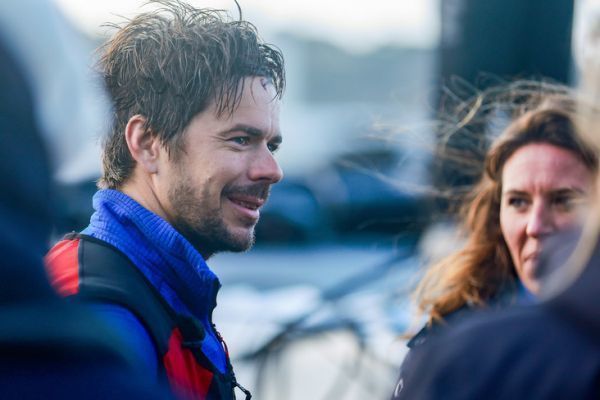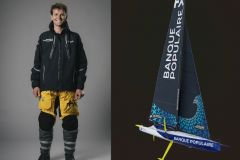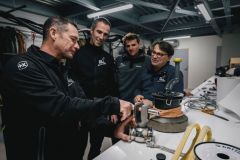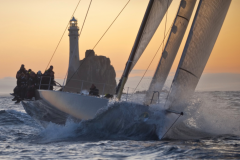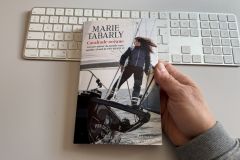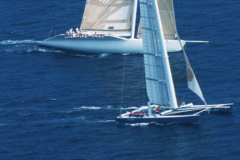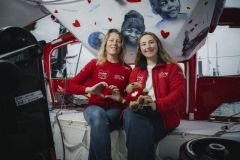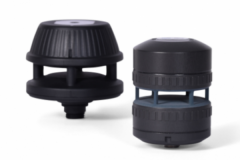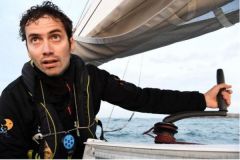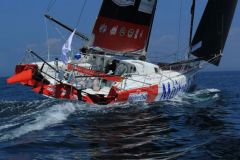After taking part in the transatlantic race Retour à la Base, Sébastien Simon takes a look back at his adventure with damage and injury to his IMOCA Groupe Dubreuil.
Tell us about the start of "Retour à la base". How did the first few days of the race go?
It was my 1 er single-handed departure on this boat, which has mainly sailed as part of a crew under the 11th Hour colors. As a reminder, we started the project in July with the support of Groupe Dubreuil. I set off with sails we'd just got back, which were adapted at the last minute.
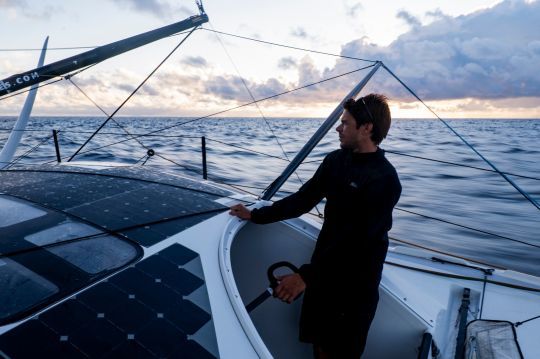
For my 15 e transatlantic race, I got off to a great start, and stayed in touch in 2 e position. I was really happy to be in phase with the boat, which was making good progress. Then the conditions strengthened, and things started to hit the fan. The first lows put us back into the swing of winter.
My main objective was to finish the race, so I put my foot down. I wanted to keep this phase of constant progress. I went from second to 4th e place, being overtaken by Yoann Richomme and Sam Davies.
You took a very serious blow to the head. What was the accident like?
On the night of December 6 to 7, I suffered an intense concussion.
At one point, I took off my helmet to go to sleep, and then blacked out. I had no memory of what had happened. I regained consciousness with a bloody face. As I reached for my phone, I realized that I'd already sent a photo of my injured head to my team manager, but I didn't remember.
I found myself in front of my pharmacy and a mirror. I tested my stapler on my arm to see if it worked. Then, mechanically, I stapled the wound without thinking too hard. I sealed half of it, but the other half was too large to hold the staples.
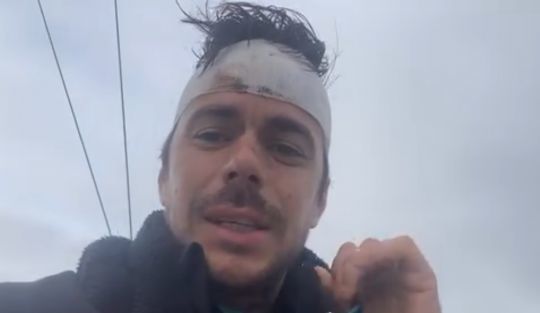
I then called my fiancée, quite serene, to ask her a few lunar questions.
I started to come to my senses by talking to the race doctor. I put on a bandage, cleaned up my wound and put things right in my head.
The doctor suggested diverting to the Azores and giving up. I refused, there was no way I was giving up.
Then you had engine trouble a few hours later...
Yes, the next night I tried to start the engine to charge the batteries. But it never started. I put the hydrogenerator in the water, waiting for technical feedback from my team. But with speed, it tore itself away from its support. I then had no way of recharging my batteries. Before the blackout, I had set course for the Azores. As I'd expected, the batteries went to safety. I had no GPS, no communications and no means of producing fresh water. I pulled out the emergency satellite phone to alert the shore team, who organized my welcome in Flores. The locals helped me organize my arrival and secure the boat at anchor.
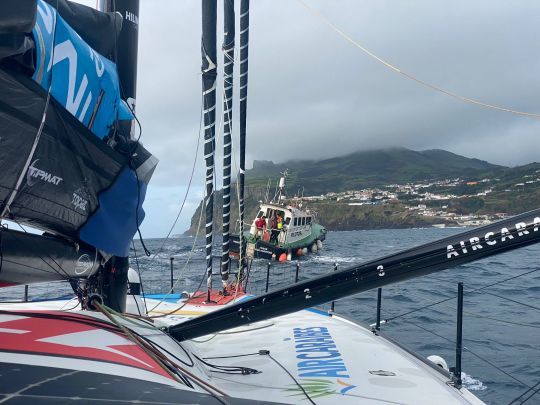
I was greeted by some incredible people, who helped me with real kindness. We soon realized that the starter motor was at fault, and were able to repair it fairly quickly.
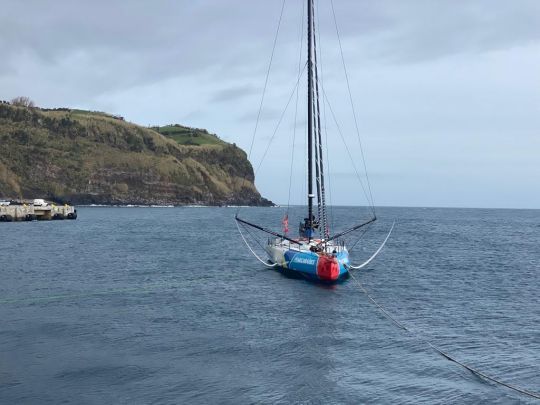
The people of Flores invited me to a holy meal, where everyone is welcomed. It's a religious tradition unique to the island. I appreciated the gesture before leaving. There are 3,300 inhabitants on Flores, who live in a small autarky, and have to rely on each other, like sailors.
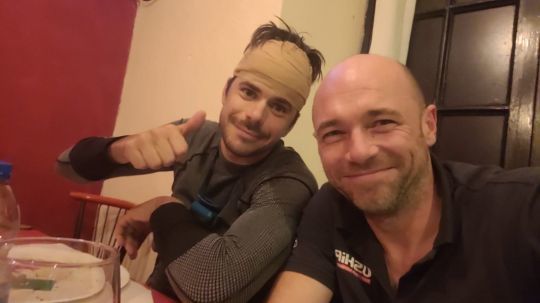
The swell and wind changed direction, and my IMOCA's mooring became unstable, so I decided to set off again as quickly as possible. I hoisted the mainsail solo, then set off again. I repowered my engine and contacted race management to inform them of my return to the race.
Despite the pain in my head and back, I was delighted to set course for Lorient while still racing. I had 30 knots of wind and a nice swell to take me home.
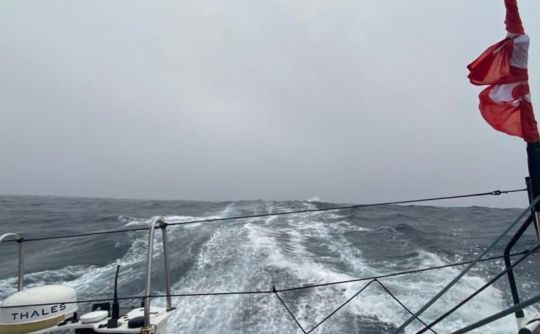
How did your dismasting go so close to the finish?
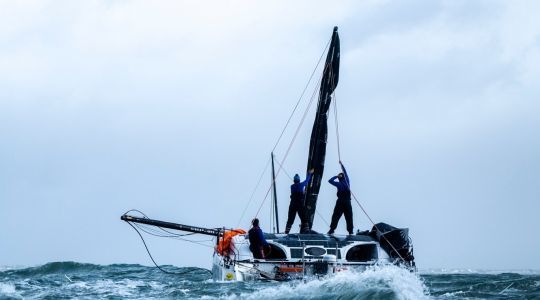
15 miles before the finish line, I make my last gybe of the race. Then the mast collapses on deck, ripping off my satellite antenna. I get out my emergency phone again to report the situation, but I don't ask for assistance.
I have to secure the boat as quickly as possible. The mast is banging against the hull, making the situation quite dangerous.
Not without difficulty, I recovered as much as I could, forgetting my back pain. I had to be quick, because I knew that once I'd passed the northern axis of Groix, I might not be able to cross the line.
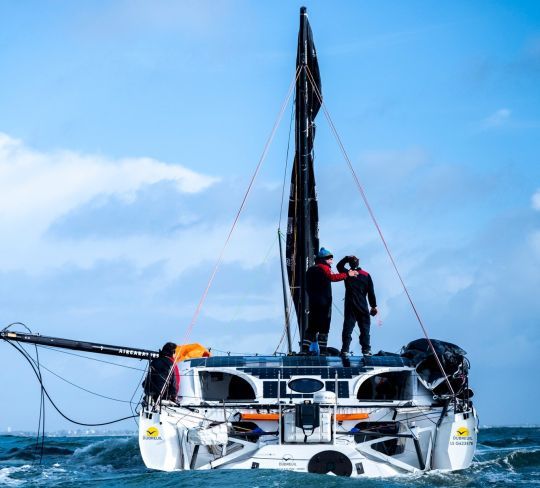
I checked the boom with a goat and a jockey pool, using the runners and forestay. Just two hours after dismasting, I was off again with my 7.5 m boom as mast!
I don't know how I found the energy to achieve this feat.
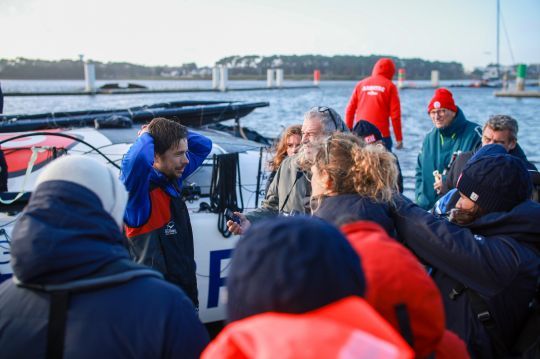
What's next on the program? Have you identified the cause of your dismasting?
I'm waiting for the decisions that will be taken for the rest of the project.
I can't say for sure, but a priori it was the port lower shroud that failed. The mast gave way under the shroud attachment point. It's the only one I didn't cut when I had to secure the boat.
It's the 8th e dismasting on the IMOCA boats this year. We know that this is a sensitive point for our boats, as this one-design mast was designed for boats without foils.
We know that the class is working on a new profile for the Vendée Globe 2028. This is important for our future projects, as reliability criteria are no longer what they used to be.
In spite of all this, the balance sheet is extremely positive. I'm impressed myself with the energy I've been able to deploy.
